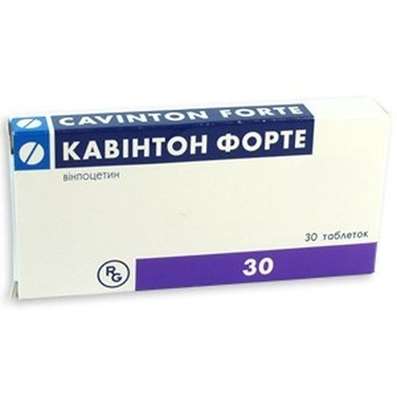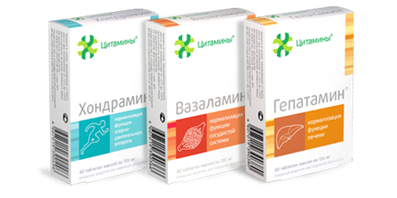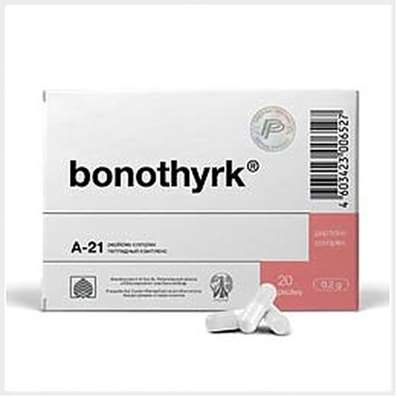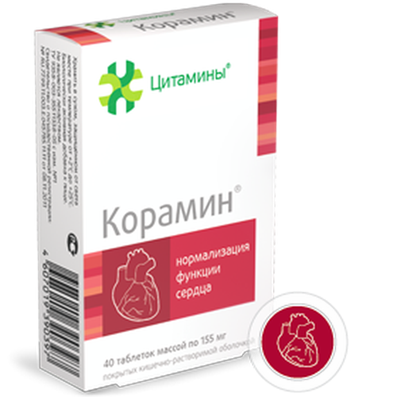Instruction for use: Vero-Epoetin
I want this, give me price
Dosage form: Lyophilizate for the preparation of a solution for intravenous and subcutaneous administration
Active substance: Epoetinum beta
ATX
B03XA01 Erythropoietin
Pharmacological group:
Stimulators of hemopoiesis
The nosological classification (ICD-10)
D63.0 Anemia in neoplasm: Anemia in chronic diseases; Anemia due to radiation damage; Radiation anemia; Anemia in patients with solid tumors; Pernicious anemia
D63.8 Anemia in other chronic diseases classified elsewhere: Anemia in chronic diseases; Anemia in immunological disorders; Anemia in peptic ulcer; Anemia in kidney diseases; Anemia with HIV treatment; Anemia in the background of chronic renal failure; Anemia in patients with myeloma; Symptomatic anemia; Symptomatic anemia of renal genesis; Anemia in HIV-infected patients; Renal anemia
P61.2 Anemia of prematurity: Anemia in preterm infants; Anemia of physiological preterm infants
Z100 * CLASS XXII Surgical practice: Abdominal surgery; adenomectomy; Amputation; Coronary angioplasty; Angioplasty of the carotid arteries; Antiseptic skin treatment for wounds; Antiseptic Hand; Appendectomy; atherectomy; Balloon coronary angioplasty; Vaginal hysterectomy; The coronary bypass; Interventions in the vagina and cervix; Interventions on the bladder; Intervention in the mouth; Restoration and reconstructive surgery; Hand hygiene of medical personnel; Gynecologic surgery; Gynecological intervention; Gynecological surgery; Hypovolemic shock during operations; Disinfection of purulent wounds; Disinfection of wounds edges; Diagnostic intervention; Diagnostic procedures; Cervical Diathermocoagulation; Long-surgery; Replacing the fistula catheters; Infection in orthopedic surgery; Artificial heart valve; cystectomy; Short-term outpatient surgery; Short-term operation; Short surgical procedures; Krikotireotomiya; Blood loss during surgery; Bleeding during surgery and in the postoperative period; Kuldotsentez; laser photocoagulation; laser coagulation; retinal laser coagulation; Laparoscopy; Laparoscopy in Gynecology; CSF fistula; Small gynecological operations; Small surgical procedures; Mastectomy and subsequent plastic; mediastinotomy; Microsurgical operations on the ear; Mukogingivalnye operation; suturing; Minor surgery; neurosurgical operation; Immobilization of the eyeball in ophthalmic surgery; testectomy; pancreatectomy; Perikardektomiya; The period of rehabilitation after surgery; The period of convalescence after surgery; Percutaneous transluminal coronary angioplasty; Pleural thoracentesis; Pneumonia postoperative and posttraumatic; Preparation for surgical procedures; Preparation for surgery; Preparation of the surgeon's hands before surgery; Preparation of the colon for surgical procedures; Postoperative aspiration pneumonia in neurosurgical and thoracic surgery; Postoperative nausea; Postoperative bleeding; postoperative granuloma; postoperative shock; The early postoperative period; myocardial revascularization; Radiectomy; gastric Resection; bowel resection; uterine Resection; liver Resection; enterectomy; Resection of part of the stomach; Reocclusion of the operated vessel; Bonding tissues during surgical procedures; Removal of sutures; Condition after eye surgery; Condition after surgery; Condition after surgery in the nasal cavity; Condition after gastrectomy; Status after resection of the small intestine; Condition after tonsillectomy; Condition after removal of the duodenum; Condition after phlebectomy; Vascular surgery; Splenectomy; Sterilization of surgical instruments; Sterilization of surgical instruments; sternotomy; Dental surgery; Dental intervention in periodontal tissues; strumectomy; Tonsillectomy; Thoracic surgery; Thoracic surgery; total gastrectomy; Transdermal intravascular coronary angioplasty; Transurethral resection; Turbinektomiya; Removal of a tooth; cataract surgery; Removal of cysts; tonsillectomy; Removal of fibroids; Removing the mobile primary teeth; Removing polyps; Removing broken tooth; Removal of the uterus body; Removal of sutures; Fistula likvoroprovodyaschih ways; Frontoetmoidogaymorotomiya; Surgical infection; Surgical treatment of chronic limb ulcers; Surgery; The surgery in the anal area; The surgery on the colon; Surgical practice; The surgical procedure; Surgical interventions; Surgery on the gastrointestinal tract; Surgical procedures on the urinary tract; Surgical procedures on the urinary system; Surgical intervention of the genitourinary system; Surgical procedures on the heart; Surgical manipulation; surgery; Surgery on the veins; Surgical intervention; Vascular surgery; Surgical treatment of thrombosis; Surgery; cholecystectomy; Partial gastric resection; hysterectomy; Percutaneous transluminal coronary angioplasty; Percutaneous transluminal angioplasty; Coronary artery bypass; tooth Extirpation; Extirpation of milk teeth; pulpectomy; pulsative cardiopulmonary bypass; tooth Extraction; teeth Extraction; cataract extraction; Electrocoagulation; endourological intervention; episiotomy; Etmoidotomiya; Complications after tooth extraction
Composition and release form
Lyophilizate for the preparation of solution for intravenous and subcutaneous administration 1 fl.
Recombinant human erythropoietin 1000 IU; 2000 IU; 4000 IU; 10,000 IU
Auxiliary substances: PVP low molecular weight medical; Citrate-phosphate buffer to obtain a solution with a pH of 6.9
In bottles of colorless glass I or II hydrolytic; In a pack of cardboard 1, 5 or 10 bottles.
Description of dosage form
Porous amorphous mass of white or almost white color.
Pharmachologic effect
Mode of action - Hematopoietic.
Pharmacodynamics
Epoetin beta-glycoprotein, specifically stimulating erythropoiesis, activates the mitosis and maturation of erythrocytes from the progenitor cells of the erythrocyte series. Recombinant epoetin beta is synthesized in mammalian cells in which a gene encoding human erythropoietin is inserted. In its composition, biological and immunological properties, epoetin beta is identical to natural human erythropoietin. The introduction of epoetin beta leads to an increase in hemoglobin and hematocrit, an improvement in the blood supply of tissues and the work of the heart. The most pronounced effect of epoetin beta is observed in anemia caused by chronic renal failure. In very rare cases, with the long-term use of erythropoietin for the therapy of anemic conditions, the formation of neutralizing antibodies to erythropoietin may be observed with the development of partial red cell aplasia or without it.
Pharmacokinetics
With intravenous administration of Vero-Epoetin in healthy individuals and patients with uremia T1 / 2 - 5-6 hours. After the administration of epoetin beta, its concentration in the blood increases slowly and reaches a maximum in the period from 12 to 28 hours after administration, T1 / 2 - 13-28 hours. With iv introduction of T1 / 2 - 4-12 hours Bioavailability of Vero-Epoetin with n / k introduction - 25-40%.
Indication
Prevention and treatment of anemia in patients with solid tumors, whose anemia was the result of antitumor therapy, in HIV-infected patients (AIDS) caused by Zidovudine, in patients with myeloma, low-grade non-Hodgkin's lymphomas, chronic lymphocytic leukemia, rheumatoid arthritis.
Treatment and prevention of anemia in premature infants born with a body weight of up to 1.5 kg.
To reduce the volume of blood transfused with extensive surgical interventions and acute blood loss.
Contraindications
Hypersensitivity to the drug or its components, partial red cell aplasia after previous therapy with any erythropoietin, uncontrolled arterial hypertension, inability to conduct adequate anticoagulant therapy, myocardial infarction within a month after the event, unstable angina or increased risk of deep vein thrombosis and thromboembolism Within the limits of a preshipter program of blood collection before surgical operations, porphyria.
With care - thrombosis (in the anamnesis), malignant neoplasms, sickle cell anemia, mild anemia without iron deficiency, refractory anemia, epilepsy and chronic hepatic insufficiency, pregnancy, breastfeeding.
Application in pregnancy and lactation
Since there is no sufficient experience with the use of erythropoietin in pregnancy and breastfeeding, Vero-Epoetin should be prescribed only if the expected benefits from its use exceed the possible risk for the fetus, the baby and the mother. It is introduced into mammalian cells in which the gene encoding Human erythropoietin. In its composition, biological and immunological properties, epoetin beta is identical to natural human erythropoietin. The introduction of epoetin beta leads to an increase in hemoglobin and hematocrit, an improvement in the blood supply of tissues and the work of the heart. The most pronounced effect of epoetin beta is observed in anemia caused by chronic renal failure. In very rare cases, with the long-term use of erythropoietin for the therapy of anemic conditions, the formation of neutralizing antibodies to erythropoietin may be observed with the development of partial red cell aplasia or without it.
Side effects
In some cases, at the beginning of treatment, flu-like symptoms (dizziness, drowsiness, fever, headache, myalgia, arthralgia) are noted.
Allergic reactions are possible, namely, a mild to moderate skin rash, hives, itching, angioedema, eczema.
From the side of the cardiovascular system: a dose-dependent increase in blood pressure is possible, a deterioration in the course of arterial hypertension (most often in patients with uremia), in some cases - hypertensive crisis, a sharp increase in blood pressure with symptoms of encephalopathy (headache, confusion) and generalized tonic-clonic Convulsions.
On the part of the circulatory system: thrombocytosis, in some cases - shunt thrombosis (in patients on hemodialysis with a tendency to hypotension or an aneurysm, stenosis, etc.).
Local reactions: hyperemia, burning, mild or moderate soreness at the site of injection (often occur with SC the introduction).
On the part of laboratory indicators: a decrease in serum ferritin; In patients with uremia, hyperkalemia and hyperphosphataemia may occur.
Other: complications associated with respiratory failure or with changes in blood pressure; Very rarely - possible immune reactions (induction of antibody formation with the development of partial red cell aplasia or without it), exacerbation of porphyria.
Interaction
With the simultaneous use of cyclosporine, it may be necessary to adjust the dose of the latter because of the increase in its binding by erythrocytes. The experience of the clinical use of Vero-Epoetin has so far not revealed the facts of its pharmacological incompatibility with other drugs. However, in order to avoid possible incompatibility or decrease in activity, Vero-Epoetin should not be mixed with solutions of other medications.
Dosing and Administration
IV, SC.
Treatment of anemia in patients with chronic renal failure: SC or IV, patients on hemodialysis - through an arteriovenous shunt at the end of a dialysis session. When the method of administration is changed, the drug is administered in the previous dose, then the dose is corrected if necessary (with the V / E method of Vero-Epoetin administration, a 20-30% dose is required to achieve the same therapeutic effect than with the IV introduction). Treatment with Vero-Epoetin involves two stages:
I. Correction phase: with the introduction of Vero-Epoetin, the initial single dose is 30 IU / kg 3 times a week. With intravenous administration of Vero-Epoetin, the initial single dose is 50 IU / kg. The correction period lasts until the optimal hemoglobin level is reached (100-120 g / l in adults and 95-110 g / l in children) and hematocrit (30-35%). These indicators need to be monitored weekly. The following situations are possible:
1) The hematocrit rises from 0.5 to 1% per week. In this case, the dose is not changed until the optimal values are achieved.
2) The growth rate of hematocrit is less than 0.5% per week. In this case, it is necessary to increase the single dose by a factor of 1.5.
3) The rate of growth is more than 1% per week. In this case, it is necessary to reduce the single dose of the drug by a factor of 1.5.
4) The hematocrit remains low or decreases. It is necessary to analyze the causes of resistance.
The effectiveness of therapy depends on a properly selected individual treatment regimen.
II. Stage of maintenance therapy: to maintain the hematocrit at 30-35% dose of Vero-Epoetin, used in the correction phase should be reduced by 1.5 times. Then the supporting dose of Vero-Epoetin is selected individually, taking into account the dynamics of the hematocrit and hemoglobin.
After stabilization of hemodynamic indicators, a transition to the introduction of Vero-Epoetin 1 time in 1-2 weeks is possible.
Prevention and treatment of anemia in patients with solid tumors: before the start of treatment it is recommended to carry out a determination of the level of endogenous erythropoietin. When the serum erythropoietin concentration is less than 200 IU / ml, the initial dose of Vero-Epoetin in the IV method of administration is 150 IU / kg. With n / to the method of administration, the initial dose of Vero-Epoetin can be reduced to 100 IU / kg. In the absence of an answer, an increase in the dose to 300 IU / kg is possible. Further increase in the dose seems inappropriate. It is not recommended to appoint erythropoietin to patients with an endogenous erythropoietin content in the serum above 200 IU / ml.
Prevention and treatment of anemia in patients with HIV infection: intravenous epoetin beta at a dose of 100-150 IU / kg 3 times a week is effective in HIV patients receiving Zidovudine, provided that the serum endogenous erythropoietin level of the patient is less than 500 IU / ml, and the dose of Zidovudine is less than 4200 mg per week. At n / to the introduction the dose of Vero-epoetin can be reduced in 1,5 times.
Prevention and treatment of anemia in patients with myeloma, low-grade non-Hodgkin's lymphoma and chronic lymphocytic leukemia: in these patients, the feasibility of epoetin beta treatment is due to inadequate synthesis of endogenous erythropoietin against the background of anemia. If the hemoglobin content is below 100 g / l and the serum erythropoietin is below 100 IU / ml, Vero-Epoetin is administered sc in the starting dose of 100 IU / kg 3 times a week. Laboratory monitoring of hemodynamic parameters is carried out weekly. If necessary, the dose of epoetin beta is adjusted upwards or downwards every 3-4 weeks. If no increase in hemoglobin is observed when a weekly dose of 600 IU / kg is reached, further use of epoetin beta should be discontinued as ineffective.
Prevention and treatment of anemia in patients with rheumatoid arthritis: In patients with rheumatoid arthritis, the synthesis of endogenous erythropoietin is suppressed under the influence of an increased concentration of pro-inflammatory cytokines. Treatment of anemia in these patients is carried out by Vero-Epoetin with p / to the introduction in a dose of 50-75 IU / kg 3 times a week. With an increase in hemoglobin content of less than 10 g / l, after 4 weeks of treatment, the dose of Vero-Epoetin is increased to 150-200 IU / kg 3 times a week. Further increase in the dose seems inappropriate.
Treatment and prevention of anemia in preterm infants born with low body weight: Vero-Epoetin is administered scf at a dose of 200 IU / kg 3 times a week, from the 6th day of life until the achievement of hemoglobin and hematocrit targets, but no more than 6 weeks .
Prevention of anemia with extensive surgical interventions and acute blood loss: Vero-epoetin is given IV or IV three times a week at a dose of 100-150 IU / kg until the hematocrit normalizes and the hemoglobin content.
Overdose
Symptoms: increased side effects.
Treatment: symptomatic, with a high level of hemoglobin and hematocrit bloodletting is indicated.
Special instructions
During treatment, it is necessary to monitor the blood pressure weekly and conduct a general blood test, including determination of hematocrit, platelets and ferritin. In patients with uremia who are on hemodialysis because of the increase in hematocrit, it is often necessary to increase the dose of heparin, in addition, timely prevention of thrombosis and early revision of the shunt is necessary. In the pre- and postoperative period, Hb should be monitored more often if its baseline was less than 140 g / l. It should be remembered that Vero-Epoetin does not replace blood transfusion, but it reduces the volume and frequency of its use. Patients with controlled arterial hypertension or with thrombotic complications may need to increase the dose of antihypertensive and / or anticoagulant drugs. With the development of hypertensive crisis, urgent measures are taken to provide medical care to the patient, treatment with Vero-Epoetin should be interrupted. When Vero-epoetin is prescribed, patients with hepatic insufficiency may have a slower metabolism and a marked increase in erythropoiesis. The safety of Vero-Epoetin in this group of patients has not been established. You can not exclude the possibility of Vero-Epoetin influence on the growth of some types of tumors, including. Tumors of the bone marrow. One should take into account the possibility that preoperative increase in Hb level may serve as a predisposing factor to the development of thrombotic complications. Before starting treatment, the possible causes of inadequate reaction to the drug should be excluded (iron deficiency, folic acid, cyanocobalamin, severe Al3 + poisoning, concomitant infections, inflammatory processes and trauma, latent hemorrhage, hemolysis, bone marrow fibrosis of various etiologies) and, if necessary, adjust treatment . In most patients with uremia, oncological and HIV-infected patients, the serum ferritin level decreases simultaneously with the increase in hematocrit. The level of ferritin should be determined throughout the course of treatment. If it is less than 100 ng / ml, substitution therapy with iron for oral administration is recommended at the rate of 200-300 mg / day (for children 100-200 mg / day). For preterm infants, oral iron therapy at a dose of 2 mg / day should be given as soon as possible. Patients who take autologous blood and are in pre- or postoperative period should also receive adequate therapy with iron preparations in a dose up to 200 mg / day. In patients with uremia, correction of anemia with epoetin beta may cause an improvement in appetite and an increase in absorption of potassium and proteins. In this regard, periodic correction of hemodialysis parameters may be required to maintain the levels of urea, creatinine and K + within normal limits. These patients also need to monitor the level of electrolytes in the blood serum. When using epoetin beta in women of reproductive age, it is possible to resume menstruation. The patient should be warned about the possibility of pregnancy and the need for reliable methods of contraception before the start of therapy. During the treatment period, before the optimal maintenance dose is established, patients with uremia should avoid practicing potentially dangerous activities that require an increased concentration of attention and speed of psychomotor reactions, because of the increased risk of increased blood pressure at the beginning of therapy. Given the possible more pronounced effect of epoetin beta, its dose should not exceed the dose of recombinant erythropoietin used in the previous course of treatment. During the first 2 weeks, the dose is not changed, the dose / response ratio is evaluated. After this, the dose can be reduced or increased according to the above scheme.
Storage conditions of the drug Vero-Epoetin
In a dry, the dark place at a temperature of 2-8 ° C.
Keep out of the reach of children.
Shelf life of the drug Vero-Epoetin
2 years.
Do not use after the expiry date printed on the package.

 Cart
Cart





